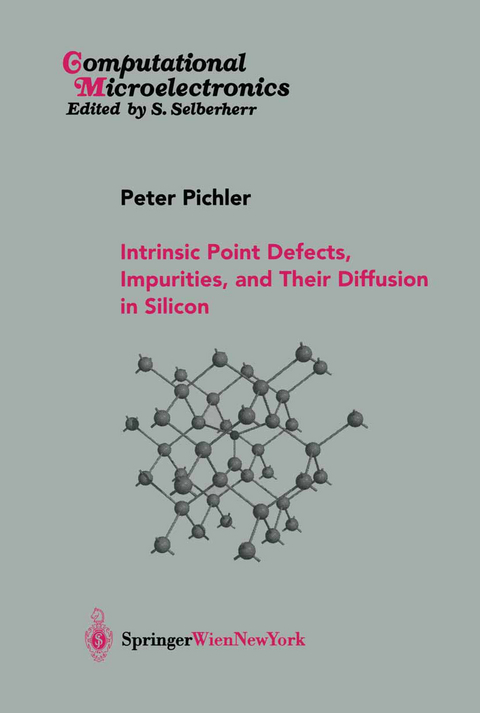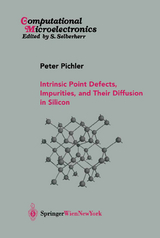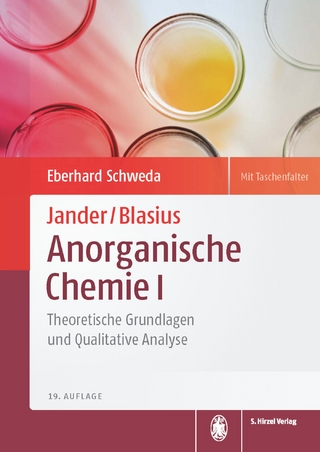Intrinsic Point Defects, Impurities, and Their Diffusion in Silicon
Springer Wien (Verlag)
978-3-211-20687-4 (ISBN)
Fundamental Concepts.- 1.1 Silicon and Its Imperfections.- 1.2 The Electron System.- 1.3 Phenomenological and Atomistic Approaches to Diffusion.- 1.4 Thermodynamics.- 1.5 Reaction Kinetics.- 1.6 Exchange of Matter Between Phases.- 2 Intrinsic Point Defects.- 2.1 Concentration in Thermal Equilibrium.- 2.2 Diffusion of Intrinsic Point Defects.- 2.3 Self-Diffusion and Tracer Diffusion.- 2.4 Vacancies.- 2.5 Self-Interstitials.- 2.6 Frenkel Pairs.- 2.7 Bulk Recombination and Bulk Processes.- 2.8 Surface Recombination and Surface Processes.- 2.9 Initial Conditions.- 3 Impurity Diffusion in Silicon.- 3.1 Basic Mechanisms.- 3.2 Impurity-Point-Defect Pairs.- 3.3 Diffusion of Substitutional Impurities via Mobile Complexes with Intrinsic Point Defects.- 3.4 Pair-Diffusion Models.- 3.5 Frank-Turnbull Mechanism.- 3.6 Kick-Out Mechanism.- 4 Isovalent Impurities.- 4.1 Carbon.- 4.2 Germanium.- 4.3 Tin.- 5 Dopants.- 5.1 Dopant Clusters.- 5.2 Ion Pairing.- 5.3 Boron.- 5.4 Aluminum.- 5.5 Gallium.- 5.6 Indium.- 5.7 Nitrogen.- 5.8 Phosphorus.- 5.9 Arsenic.- 5.10 Antimony.- 6 Chalcogens.- 6.1 Oxygen.- 6.2 Sulfur.- 6.3 Selenium.- 6.4 Tellurium.- 7 Halogens.- 7.1 Fluorine.- 7.2 Chlorine.- 7.3 Bromine.- List of Tables.- List of Figures.
| Erscheint lt. Verlag | 2.6.2004 |
|---|---|
| Reihe/Serie | Computational Microelectronics |
| Zusatzinfo | XXI, 554 p. 40 illus. |
| Verlagsort | Vienna |
| Sprache | englisch |
| Maße | 178 x 254 mm |
| Gewicht | 1185 g |
| Themenwelt | Naturwissenschaften ► Chemie ► Analytische Chemie |
| Technik ► Elektrotechnik / Energietechnik | |
| Schlagworte | acceptor and donor impurities • chalcogens • Halbleiter • halogens • isovalent atoms • semiconductor • Semiconductor Devices • Silicone • Silicone / Silikone • Simulation • Tables • thermodynamics |
| ISBN-10 | 3-211-20687-6 / 3211206876 |
| ISBN-13 | 978-3-211-20687-4 / 9783211206874 |
| Zustand | Neuware |
| Haben Sie eine Frage zum Produkt? |
aus dem Bereich




